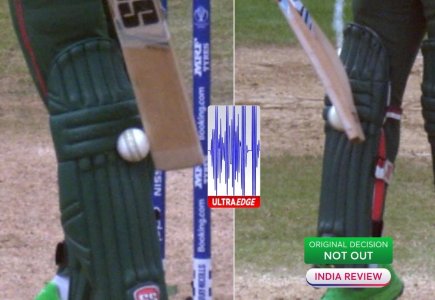- Joined
- Mar 19, 2015
- Runs
- 15,745
India reviewed an LBW decision on Soumya Sarkar, which was originally given not out. Third umpire Aleem Dar looked at Ultra Edge (see below) and deemed that there was not enough evidence to suggest it was definitely pad first (as conclusive evidence has to be found to overturn the onfield decision), so decided that to stick with the onfield decision without going to ball tracking at all. This meant India lost their review. Ball tracking showed the wickets as umpire's call, so it would have been not out in any case, but India would not have lost their review. Do you agree with what Aleem Dar did?


Last edited:





